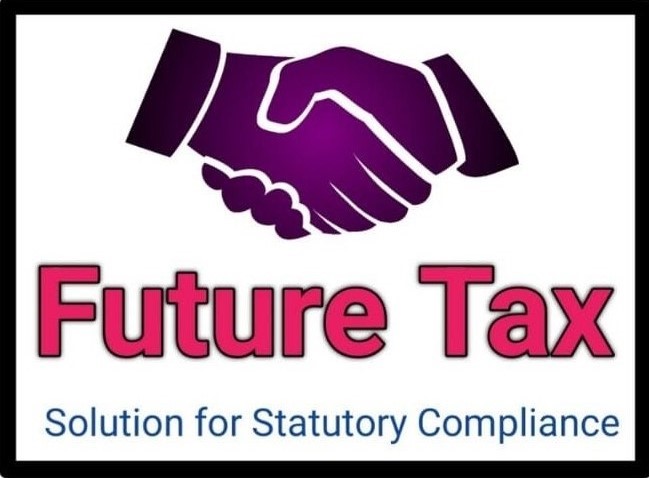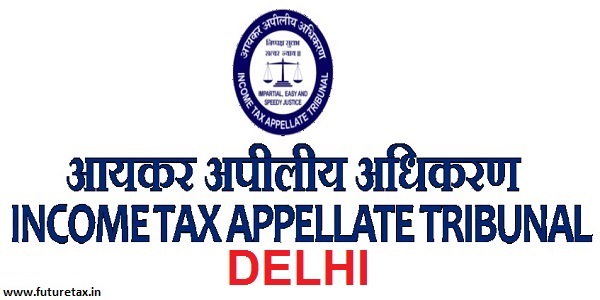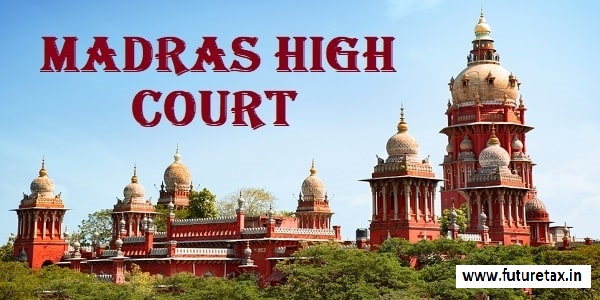
Kerala HC Bold Directives For Captive Elephant Welfare in Tamil
- Tamil Tax upate News
- November 15, 2024
- No Comment
- 232
- 15 minutes read
While batting most strongly for proper treatment and welfare of captive elephants as festival season arrives in order to protect them from cruelty and to ensure their health, rest and nutrition until government rules are implemented, the Kerala High Court in a most learned, laudable, landmark, logical and latest judgment titled In Re Captive Elephants vs Union of India & Ors in WP(C) NO. 31520 OF 2024(S) that was suo motu initiated by the Kerala High Court in the matter of executive and legislative inaction of the State Government in the matter of protection of animal rights that was pronounced as recently as on November 13, 2024 issued bold directives for captive elephant welfare drew comparisons between the treatment of elephants in captivity and the infamous atrocities of Nazi Germany’s extermination camp, Treblinka thus reflecting on the general state of human-animal relations. It must be noted that this brief, brilliant, bold and balanced judgment authored by Hon’ble Mr Justice Gopnath P for a Division Bench of the Kerala High Court comprising of Hon’ble Mr Justice Dr AK Jayasankaran Nambiar and himself sets the ball in motion by first and foremost putting forth in para 1 that, “‘Treblinka’ is infamous for being the second-deadliest extermination camp to be built and operated by Nazi Germany in occupied Poland during World War II. In the introduction to the book ‘Zoopolis – A Political Theory of Animal Rights’ the authors (Zoopolis – A Political Theory of Animal Rights – Sue Donaldson & Will Kymlicka (2011), Oxford University Press) refer to the work of Charles Patterson (Eternal Treblinka: Our Treatment of Animals and the Holocaust – Patterson, Charles (2002), Lantern Books, New York) in the following words:-
“In Charles Patterson’s provocative words, the general state of human-animal relations is best characterized as an ‘Eternal Treblinka” This case and the orders that we have been called upon to issue from time to time regarding captive elephants lead us to conclude that the life of an elephant in captivity is an ‘Eternal Treblinka’.”
Most significantly, the Division Bench encapsulates in para 14 what constitutes the cornerstone of this notable judgment mandating that, “Thus, keeping in mind the directions issued by the Supreme Court in the order dated 18.08.2015 in Wildlife Rescue and Rehabilitation Centre (supra) and keeping in mind the various issues that have been brought to the notice of this Court and also for the reasons indicated above, we are inclined to direct the strict implementation of the provisions contained in the 2012 Rules as also the strict implementation of the order issued by the Supreme Court on 18.08.2015. As already indicated, we are clear in our mind that the directions being issued by us are in tune with the 2012 Rules, as augmented by the directions of the Supreme Court and the directions are only intended for an effective implementation of the Statutory Rules. Taking note of the fact that the Government is in the process of framing new Rules, we have taken care not to expand on the extant Rules but merely to clarify their scope in the light of the directions issued by the Supreme Court. We have not made any additions to the extant Rules in any manner. Therefore, the following directions are issued for immediate implementation:-
(1) In addition to the members of the District Committee constituted Committee [The order of the Supreme Court in Wildlife Rescue and Rehabilitation Centre (supra) records that the District Committee under the 2012 Rules includes a member nominated by the Animal Welfare Board of India though the same is not mentioned in the 2012 Rules]. This direction is thus issued in conformity with what is stated in paragraph 10 of the order of the Supreme Court in Wildlife Rescue and Rehabilitation Centre (supra);
(2) The organizer of any festival where a captive elephant is proposed to be exhibited shall make an application to the District Committee at least one month prior to the date of the exhibition. This direction reiterates the direction of the Supreme Court in paragraph 11 of the order of the Supreme Court in Wildlife Rescue and Rehabilitation Centre (supra). The application shall necessarily include:-
a) The name and identification details of the elephant/elephants proposed to be exhibited and also the date/dates on which such exhibition is proposed;
b) The facilities for temporary tethering of elephants brought for exhibition;
c) The route through which processions including elephants are to be conducted and the timing for the same;
d) The venue at which the exhibition/parading of elephants would be conducted;
e) The elephant’s tour schedule covering a period 10 days prior to the proposed exhibition and 5 days after the proposed exhibition. The District Committee shall ensure that the elephant is not compelled to travel and be exhibited without sufficient rest periods between two exhibitions. Such a rest period shall not be less than three days (excluding any time taken for transportation). The District Committee may, taking into consideration the condition of any captive elephant, prescribe a longer period of rest. This is a requirement of Rule 10 (4) (xvi) of the 2012 Rules;
f) Health/fitness certificate showing that the elephant is not sick, injured, weak, disabled or otherwise unfit for exhibition. This is a requirement of Rule 10 (4) (iii) of the 2012 Rules;
g) Information relating to the elephant’s normal musth period and a certificate from an authorised veterinary surgeon regarding the same. This is a requirement of Rule 10 (4) (ii) of the 2012 Rules;
h) Declaration/Information regarding any instances of the elephant running amok during the past 12 months from the date of application. This is a requirement of Rule 10 (4) (iii) of the 2012 Rules).
(3) The District Committee shall consider such application and grant permission for exhibition only subject to the following conditions:-
a) The exhibitor shall satisfy the committee that it has made the arrangements to provide food and water in accordance with the stipulations set out by the government in Circular 1/2019 dated 22.01.2019 of Principal Chief Conservator of Forests, Kerala, or any revised stipulation in this regard which the Government may from time to time promulgate, to all elephants brought for exhibitions during the time they are in the premises of the exhibitor. Circular 1/2019 dated 22.01.2019 of Principal Chief Conservator of Forests, Kerala shall be Annexed to this order as Annexure-III. This direction is in conformity with Rules 6 and 10(4)(vii) of the 2012 Rules and Annexure-III circular of the Principal Chief Conservator of Forests, Kerala.
b) The exhibitor shall satisfy the committee that it has a temporary tethering facility complying with the following:- [Note:- these requirements are mandated by Rules 3, 10(4)(vii) and 10 (4)(ix) of the 2012 Rules]
(i) The temporary tethering site shall be clean and shall provide a healthy environment with sufficient shade for the elephants during the rest period. If roofing is provided using metal or other unbreakable material, gunny bags, grass, cadjan/palm leaves, etc., must be used to cover it to keep the shelter cool;
(ii) Each elephant shall be provided with a shelter shed having a minimum floor area of 9m x 6m and the height shall not be less than 5.5 m. The tethering site must have sufficient space for the elephant to move about while tethered and the tethers shall not be used in a manner that they fully fetter the movement of the elephant while at the temporary tethering site ;
(iii) The shelter’s floor must be made of natural materials to keep it dry and clean, and appropriate drainage must be provided;
(iv) Necessary arrangements shall be in place for prompt removal of filth and refuse from the shelter and under no circumstances shall the elephants be made to stand in their own refuse;
(v) The tethering site must have a continuous supply of potable water, which shall be accessible to the elephant without the intervention of any person.
c) The District Committee shall consider the availability of space inside temples or other places where the exhibition or parading is proposed and will ensure that no permission is granted unless the venue where the exhibitions or parading of elephants is proposed has sufficient space to parade the elephants with (i) a minimum distance of 3 meters between two elephants,(ii) a minimum distance of 5 meters from the elephant to flambeau or any other source of fire, (iii) a minimum distance of 8 meters from the elephant to the public and any percussion display, (iv) Necessary barricades are placed between the public and elephants (v) minimum distance of 100 meters is maintained from any place where fireworks are used and the place where the elephants are exhibited (vi) proper shade shall be provided to ensure that the paraded elephants are not exposed to the hot sun for elephants and a facility for feeding the elephants and providing drinking water to the elephants (vii) have a proper evacuation plan separately for elephants and for the public to be used in case of any emergency approved by the fire department. In other words, the number of Elephants that can be paraded will depend on the availability of space enabling the maintenance of the minimum distance fixed above inside the temple or any other place where the parade is proposed. These requirements are mandated by Rules 10(4)(i), 10(4) (vi), 10(4)(vii), 10(4)(viii) & 10(4)(ix) of the 2012 Rules.
d)he route for taking out the procession of elephants through public roads shall satisfy the following:-
[Note:- these requirements are mandated by Rules 10(4)(i), (v) & (viii) of the 2012 Rules]
(i) Have sufficient space to parade the elephants with a minimum distance of 3 meters between two elephants and a minimum distance of 5 meters from the elephant to flambeau or any other source of fire ;
(ii) No procession of elephants through public roads shall be permitted between 9:00 AM and 5:00 PM.
(4) The District Committee shall also ensure the following while giving permission to exhibit an elephant:-
a) An elephant shall not be transported between 10:00 PM and 4:00 AM. During this time it shall be ensured that the elephant is kept at a proper tethering site, either temporary or permanent provided by the owner or an exhibitor. (See Rule 9 of the 2012 Rules)
b) An elephant shall not be exhibited for a continuous period of more than 3 hours. (See Rule 10(xvi) of the 2012 Rules)
c) No elephant shall be made to walk for more than 30 KM a day for the purpose of transportation. All transportation above 30 KM shall be made by vehicle approved for the purpose. The transportation of the elephant shall not be made for more than 125 KM in a day by any means. No elephant shall be transported for more than 6 hours in a vehicle in a day and the speed of the vehicle shall not exceed 25 KM per hour while transporting an elephant. The officials of the Motor Vehicles Department shall ensure that Speed Governors are fixed on all vehicles engaged in the transport of elephants and that the maximum speed setting is set at the limit fixed above. (See Rule 9 of the 2012 Rules)
d) An elephant shall be ensured at least 8 hours of rest during a continuous period of 24 hours. (See Rule 10(xvi) of the 2012 Rules)
(5) Since several instances of fitness certificates being issued by Veterinary Doctors without even inspection of the animal have been brought to our notice, it is directed that the District Committee shall accept fitness certificates issued by Government Doctors only until further orders. The competent authority in the Veterinary Department, Government of Kerala will issue the necessary orders forthwith fixing the modalities for examination and issuance of fitness certificates, the period of its validity, and the fee to be remitted for issuance of fitness certificates. The Government Veterinary Doctors shall mandatorily record any injury that they notice on the elephant that they are called upon to examine and they will ensure that fitness certificates are not issued to any elephant that they feel is weak or infirm in any manner whatsoever.
(6) No contest of the nature noticed in paragraph 12 above shall be permitted under any circumstances. This is on account of the provisions contained in the Performing Animal (Registration) Rules, 2001.
(7) The owner/custodian shall maintain all registers in accordance with the provisions of the 2012 Rules, and the District Committee shall verify this before permission is granted to parade any elephant. (See Rule 8 of the 2012 Rules)
15. In addition to the above, we direct that no organiser or Devaswom shall permit the deployment of any squads which go by the name ‘Elephant Squads’ in any festival or exhibition where elephants are being paraded. We also prohibit the use of any ‘capture belt’ or such other crude and inhuman method of capturing elephants that may run amok or otherwise misbehave. (See Rule 10(4)(iv) of the 2012 Rules). This shall be included as a condition upon which permission to parade is being granted.
Finally, the Division Bench then concludes by holding in para 16 that, “We direct the Principal Secretary, Forests and Wildlife Department, Government of Kerala to place on record an affidavit explaining the circumstances under which G.O (Ms.) No. 19/2022/F&WLD dated 20.4.2022 or any later G.O on similar lines has been issued, in the face of the directions issued by the Supreme Court of India. The affidavit shall also indicate whether the orders issued by the Supreme Court referred to above have by now been complied with and if not the reason for non-compliance. The competent authority of the Government of Kerala shall ensure strict implementation of the aforesaid directions and guidelines, if necessary by issuing necessary orders and communicating the directions/guidelines framed by this Court to all stakeholders. In order to ensure effective implementation of these orders/directions the following are suo motu impleaded as additional respondents 29 to 32 to the Writ Petition:-
1 The Travancore Devaswom Board, Nanthancode, Kawdiar Post, Thiruvananthapuram 695003 represented by its Secretary
2 The Cochin Devaswom Board, Round North, Thrissur, Kerala represented by its Secretary
3 The Malabar Devaswom Board, Housefed Complex, Eranhipallam P.O, Eranhipallam, Kozhikode. represented by its Secretary.
4 The Guruvayoor Devaswom Board, Guruvayoor, Thrissur-680 101 represented by its Administrator
Registry shall serve a copy of this order on the respective standing counsel appearing for Additional Respondents 29 to 32 forthwith.”
In summation, it thus merits no reiteration that these bold directives that have been issued by the Kerala High Court for the protection of captive elephants from cruelty must be enforced most strictly. Their exploitation in any form deserves zero tolerance. The Bench noted rightly that despite repeated instructions from the Supreme Court including directives to ensure humane treatment towards elephants, the Kerala Government had failed to enforce these rules. We cannot afford to miss the stark truth that the Kerala High Court was most forthcoming in condemning the repeated extensions that were granted by the State Government in ensuring implementation of the rules and underscored that such delays have led to significant harm to captive elephants including a rise in elephant deaths. One fervently hopes that at least now Kerala State Government will pay heed to what the Division Bench of Kerala High Court has directed so very elegantly, eloquently and effectively in this leading case!




